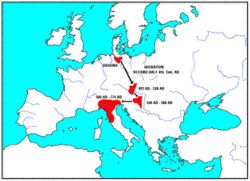This is a list of important families
and people
What we're looking for are families with
long histories with interests in shipping
and banking that are still around today.
Here's the list I have so far - the Doria,
Fieschi, Spinola, and perhaps the most important
- the
Grimaldi
family. All these families are from Genoa.
Guelfs and Ghibellines. Neufchatel. Habsburg-Lothringen
(Order of the Golden Fleece) from Austria.
Lombards. Angevin (ended 1481), Anjou. Beaufort.
Medici - They led the birth of the Italian
Renaissance along with the other great signore
families of Italy like the Visconti and
Sforza families of Milan, the Este of Ferrara,
the Gonzaga of Mantua, and others.
The Medici Bank was one of the most prosperous
and most respected in Europe. There are
some estimates that the Medici family was,
for a period of time, the wealthiest family
in Europe. From this base, the family acquired
political power initially in Florence, and
later in wider Italy and Europe. A notable
contribution to the profession of accounting
was the improvement of the general ledger
system through the development of the double-entry
bookkeeping system for tracking credits
and debits. This system was first used by
accountants working for the Medici family
in Florence.

|
In 568-569 the
Lombards,
invaded Italy under their king
Alboin
(c. 560-572). They came from Pannonia
(modern day Hungary), and formed the
Italian city states and the modern day
region named after them,
Lombardy. They were prominent bankers
and merchants.
Two Lombards,
Albizzo and Musciatto Guidi, were receivers
of taxes and royal treasurers for the
French crown in the 1290s. In 1294 they
secured loans of 600,000 livres
tournois (~$600 million) from Italian
families living in France and in 1297
they added a further 200,000 livres
tournois (~$200 million) of their
own money. By 1303 they were used less
and less for royal service and in 1311
all of their goods and debts were appropriated
and they were arrested.
|
|